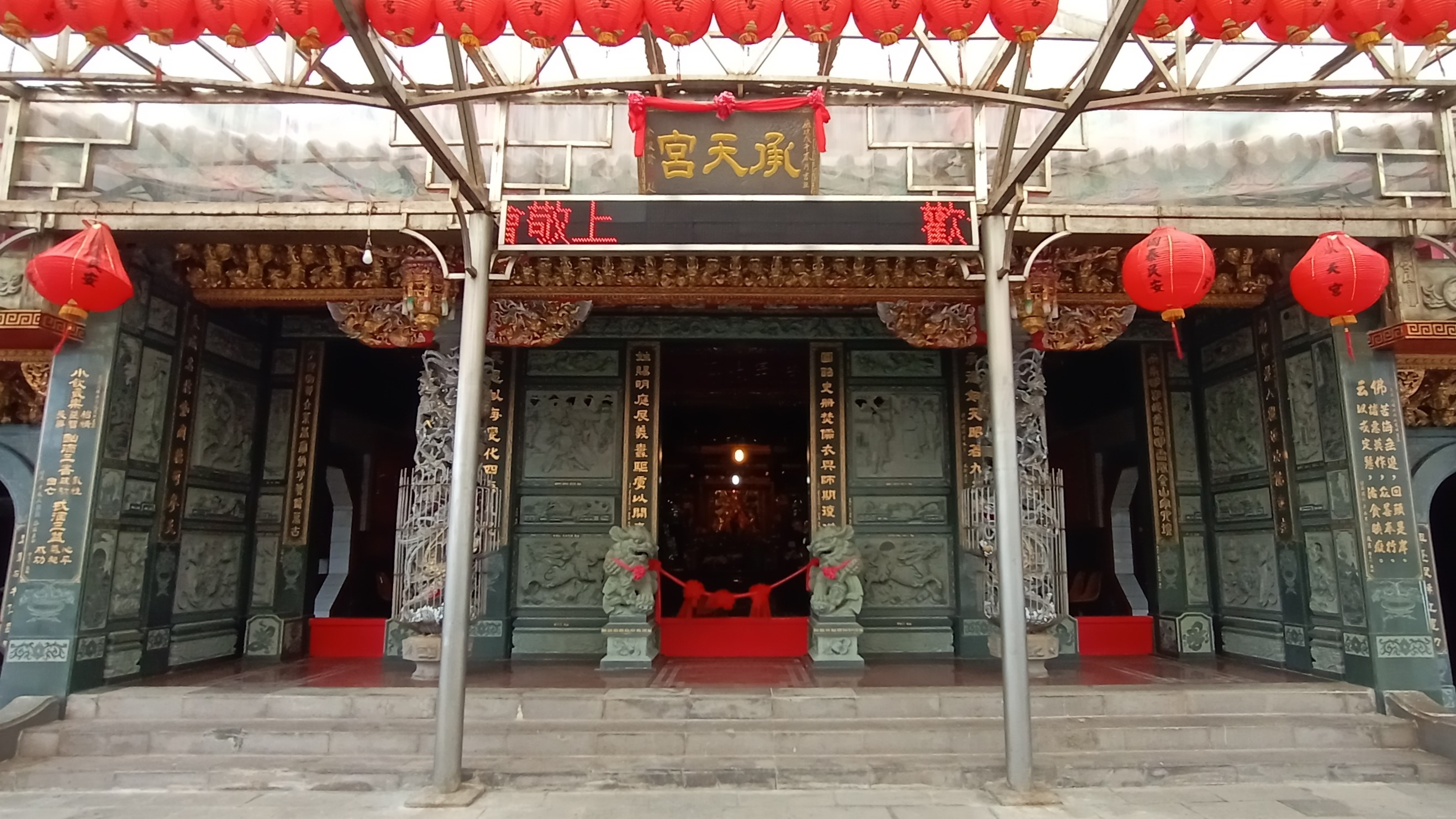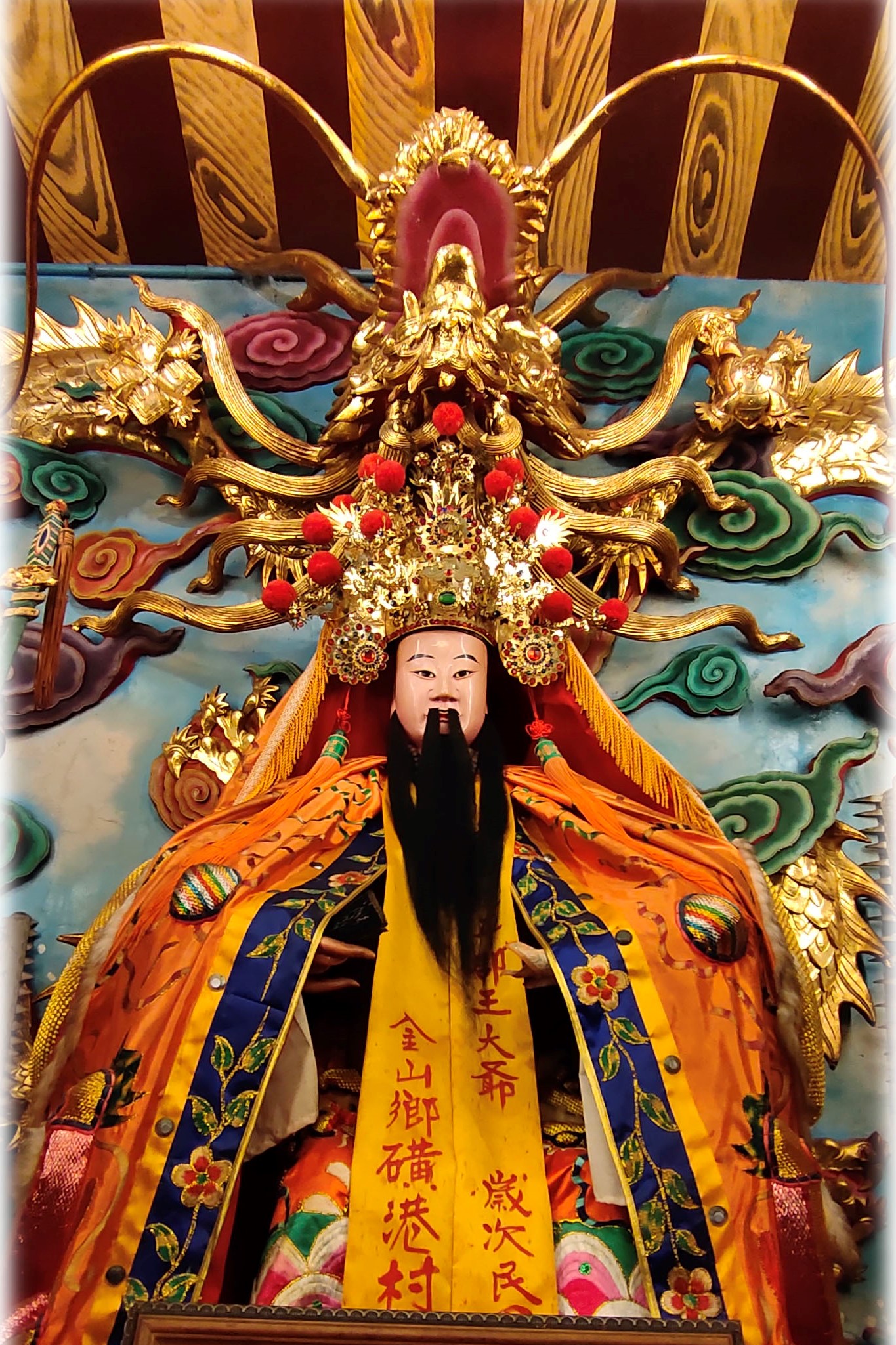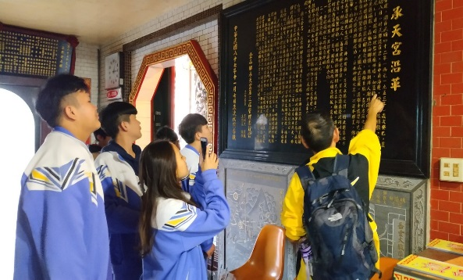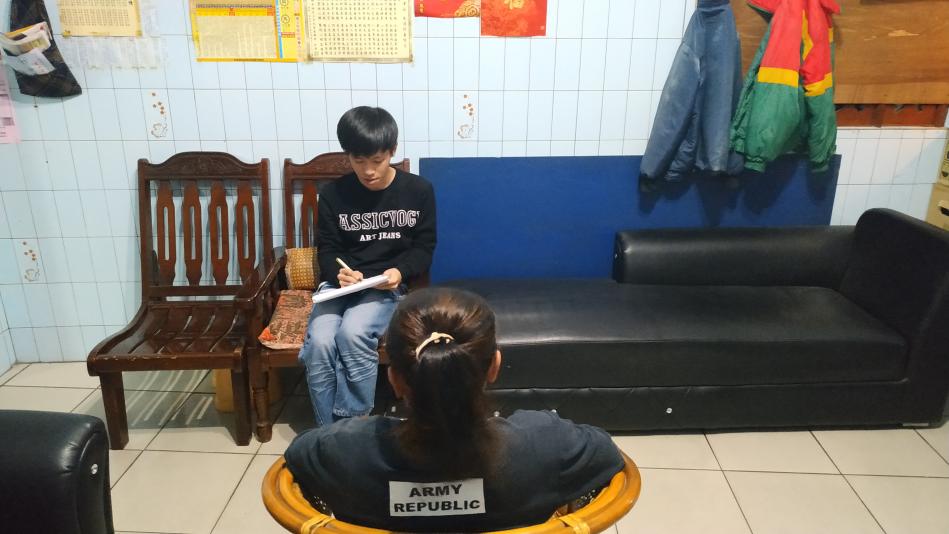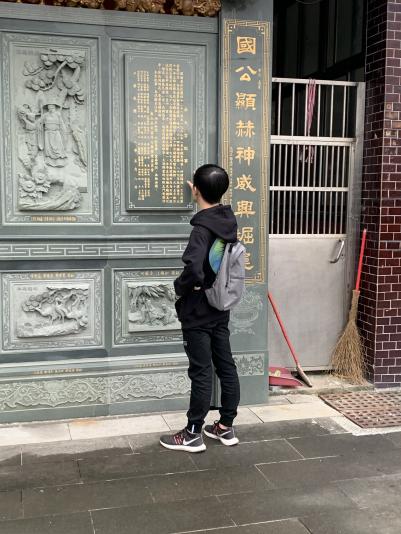The Elements of the Project
I. Please explain how your team's research project meets the goals and objectives of the "Taiwan School Cyberfair"?
The 65-year-old "Chengtian Temple" is located in Huanggang, Jinshan District, New Taipei City, near the school we are studying at (New Taipei City Jinshan High School). Our team members are mostly local people, and we should have an understanding of the local culture. To know and get close to the ancient temples, we chose "Chengtian Temple" as the topic of this study. Our team members are seven 11th graders. In the process, we students play the leading role in research and web page production. Teachers, community members, and cultural and historical workers play a supporting role. From this project, we have learned about the history, culture, evolution, and architecture of the Chengtian Temple. We have also learned how to organize information, think about problems, and make webpages. It has also taught us the importance of cooperation. Through the participation of this event, in addition to understanding the history and culture of Chengtian Temple, we also look forward to passing down the history and culture unique to Chengtian Temple to let more people know.
II. How did your research project engaged in the "Taiwan School Cyberfair" activity integrate with school-based curriculum?
In this research project, we combine what we learn every day theoretically and practically. It’s a process of learning and doing. The subjects included are as follows:
|
A. Chinese: |
|
By reading related books and the records in the temple itself, we learn how to correctly extract the key points and organize all the information. The couplets, plaques, and inscriptions in the temple have many special meanings. We get to learn the evolution of Chinese characters and understand the wisdom of our ancestors. |
|
B. Social Studies: |
|
In order to get a deeper understanding of the Chengtian Temple, we searched the Internet for many characteristics and history of Fujian-style architecture. We also asked about how the Chengtian Temple was built, which enabled us to better understand the characteristics and development history of Fujian architecture in Taiwan. |
|
C. Introduction to Business: |
|
From the process of interviews and observations, we learned about the interaction and verbal expressions between people. We completed this research through the division of labor and cooperation. We have been learning how to promote Chengtian Temple. |
|
D. Computer Science: |
|
Through the teacher's teaching, we have a better understanding of how to apply office software and how to set up webpages. We have actually completed the design of a web page. In addition, the Internet helps us to find a large amount of data and learn how to properly filter and use the information online. |
|
E. Arts and Humanities: |
|
In order to better understand Chengtian Temple, we have visited the temple many times to learn about the beauty of the temple’s architecture and cultivate the ability to appreciate it. We have also taken many photos of the temple’s architecture. We have learned to take good pictures and appreciate architecture, making art a part of our life. |
III. Please explain what information technology did your team use to complete your research project?
|
equipment |
tools |
explanation |
|
Computer hardware |
Desktop computer |
Search for information, organize the paper, design the webpage, check the progress |
|
Laptop computer |
Search for information, organize the paper |
|
|
Scanner |
Scan the records of the temple for a better look |
|
|
Computer software |
Word2010 |
Word processing, organizing data |
|
Line
/ Discord |
Contact and discussion |
|
|
File Transfer Protocol(FTP) |
File Transfer Protocol (FTP) Upload all the information and work |
|
|
Dreamweaver |
The layout of the website |
|
|
Photocap PhotoShop Illustrator |
Image processing and editing |
|
|
others |
Cellphones |
Taking photos, recording images and voices, keeping records, connecting |
IV. Please explain in what ways your team plays the role of "ambassadors" for your CyberFair project both online or in person.
As a younger generation in the Huanggang community, we have no knowledge of the local humanities. Therefore, we decided to explore the history of Chengtian Temple. During the research, we used the Internet to collect data, and asked for help of the temple staff and community members. We asked Mr. Zhuo, a worker for culture and history, to give us a guided tour and an interview. We collected and organized all the information we could to make a webpage about Chengtian Temple for people to browse. We hope that people can understand the history and humanity aspect of Chengtian Temple.
V. What different methods did you use to communicate with local people in order to complete the project? ?
During the course of this project, we didn't know anything about Chengtian Temple. Therefore, it is necessary to consult a lot of data and contact with temple personnel, local people, and cultural and historical workers. We visited the temple staff and local people. As for the cultural and historical worker, we asked Mr. Zhuo whether he could accept our interview by sending messages. After Mr. Zhuo agreed, we began to talk with Mr. Zhuo on the telephone to facilitate the interview and the guided tour, with which he really enriched the content of our topic.
VI. Respect for intellectual property rights and references:
The theme of this research is the category of historical monuments. We started the project after we obtained the consent of the temple staff. Some of the data we got was from the temple staff and some of it was through the oral interpretation of community members and cultural and historical workers. We also found relevant information on the Internet, and checked the books and literature. After collecting the information, we tried to present the project in our own words. As for the part of the photo, we actually went to the site to take pictures. Before taking the pictures, we would also ask the temple staff for their consent. We also used the historical photos provided by the temple or on the Internet. Sources are listed in the project.
VII. What has the impact of your project been on you?
Chengtian Temple is the faith center of Huanggang community, but most of the young people (including us as local people) do not know its development history and culture, and they don’t know about the building of the temple. Field visits and interviews with local elders and cultural and historical workers enable us to know the construction methods, historical evolution and cultural characteristics of Chengtian Temple. Besides understanding Chengtian Temple more, we have further understanding of the culture and beauty of the temples in Taiwan, which cannot be learned from the textbooks. Our hard work paid off.
In the process of research, we come to understand the history of the local culture. What's more important is that we have a complete learning experience on the research of the topic and the production of the web page. It is a valuable learning experience combining the daily learning and practice.
VIII. Discoveries, Lessons and Surprises
The biggest achievement of this project is to have a complete understanding of Chengtian Temple, the faith center of our hometown. We have organized the information and set a webpage for the public to browse. In addition, we also know more about the temple culture in Taiwan. The deities worshipped in each temple have their backgrounds, and the architecture of the temple has special meanings. Studying the ancient monuments left by our ancestors is very interesting.
In the beginning, we had no idea about the topic research. Everyone was busy with their schoolwork. It was really confusing and hard. Some people wanted to quit. With the encouragement of the teachers, everyone insisted on it. Through the division of labor and cooperation, we supported each other and made the best use of the time outside of class. The work was finally completed. Although the process was hard, we have learned lessons and experiences which we won’t learn from the textbook. It shows the true meaning of “You reap what you sow.”
